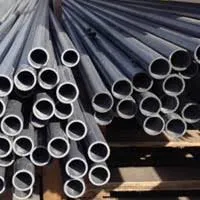
-
 Afrikaans
Afrikaans -
 Albanian
Albanian -
 Amharic
Amharic -
 Arabic
Arabic -
 Armenian
Armenian -
 Azerbaijani
Azerbaijani -
 Basque
Basque -
 Belarusian
Belarusian -
 Bengali
Bengali -
 Bosnian
Bosnian -
 Bulgarian
Bulgarian -
 Catalan
Catalan -
 Cebuano
Cebuano -
 China
China -
 China (Taiwan)
China (Taiwan) -
 Corsican
Corsican -
 Croatian
Croatian -
 Czech
Czech -
 Danish
Danish -
 Dutch
Dutch -
 English
English -
 Esperanto
Esperanto -
 Estonian
Estonian -
 Finnish
Finnish -
 French
French -
 Frisian
Frisian -
 Galician
Galician -
 Georgian
Georgian -
 German
German -
 Greek
Greek -
 Gujarati
Gujarati -
 Haitian Creole
Haitian Creole -
 hausa
hausa -
 hawaiian
hawaiian -
 Hebrew
Hebrew -
 Hindi
Hindi -
 Miao
Miao -
 Hungarian
Hungarian -
 Icelandic
Icelandic -
 igbo
igbo -
 Indonesian
Indonesian -
 irish
irish -
 Italian
Italian -
 Japanese
Japanese -
 Javanese
Javanese -
 Kannada
Kannada -
 kazakh
kazakh -
 Khmer
Khmer -
 Rwandese
Rwandese -
 Korean
Korean -
 Kurdish
Kurdish -
 Kyrgyz
Kyrgyz -
 Lao
Lao -
 Latin
Latin -
 Latvian
Latvian -
 Lithuanian
Lithuanian -
 Luxembourgish
Luxembourgish -
 Macedonian
Macedonian -
 Malgashi
Malgashi -
 Malay
Malay -
 Malayalam
Malayalam -
 Maltese
Maltese -
 Maori
Maori -
 Marathi
Marathi -
 Mongolian
Mongolian -
 Myanmar
Myanmar -
 Nepali
Nepali -
 Norwegian
Norwegian -
 Norwegian
Norwegian -
 Occitan
Occitan -
 Pashto
Pashto -
 Persian
Persian -
 Polish
Polish -
 Portuguese
Portuguese -
 Punjabi
Punjabi -
 Romanian
Romanian -
 Russian
Russian -
 Samoan
Samoan -
 Scottish Gaelic
Scottish Gaelic -
 Serbian
Serbian -
 Sesotho
Sesotho -
 Shona
Shona -
 Sindhi
Sindhi -
 Sinhala
Sinhala -
 Slovak
Slovak -
 Slovenian
Slovenian -
 Somali
Somali -
 Spanish
Spanish -
 Sundanese
Sundanese -
 Swahili
Swahili -
 Swedish
Swedish -
 Tagalog
Tagalog -
 Tajik
Tajik -
 Tamil
Tamil -
 Tatar
Tatar -
 Telugu
Telugu -
 Thai
Thai -
 Turkish
Turkish -
 Turkmen
Turkmen -
 Ukrainian
Ukrainian -
 Urdu
Urdu -
 Uighur
Uighur -
 Uzbek
Uzbek -
 Vietnamese
Vietnamese -
 Welsh
Welsh -
 Bantu
Bantu -
 Yiddish
Yiddish -
 Yoruba
Yoruba -
 Zulu
Zulu
Durable PVC FRP Pipes for Reliable Water and Waste Management
Understanding PVC and FRP Pipes A Comprehensive Overview
In the realm of piping systems, PVC (Polyvinyl Chloride) and FRP (Fiberglass Reinforced Plastic) pipes have garnered significant attention due to their unique properties and applications. This article aims to explore the characteristics, benefits, and uses of PVC and FRP pipes, highlighting their advantages in various industries.
Understanding PVC and FRP Pipes A Comprehensive Overview
On the other hand, FRP pipes showcase exceptional strength-to-weight ratios, making them an excellent choice for applications requiring resistance to extreme pressures and temperatures. These pipes are composed of a polymer matrix reinforced with fibers, typically glass. This combination provides enhanced durability and flexibility, enabling them to handle various chemical environments effectively. FRP pipes are often utilized in industries such as oil and gas, wastewater management, and chemical processing, where traditional materials might fail due to corrosive elements.
pvc frp pipe

When comparing PVC and FRP pipes, it's essential to consider both materials' environmental impact and sustainability. PVC has been criticized for its environmental footprint during its production and disposal phase. However, advancements in recycling technologies are making it increasingly feasible to repurpose PVC waste. Conversely, FRP pipes are often praised for their longevity, which reduces the frequency of replacements, thereby minimizing waste.
Both PVC and FRP pipes offer unique advantages depending on the specific application requirements. While PVC is favored for its cost-effectiveness and ease of installation, FRP is preferred for its strength and resistance to harsh environments. Ultimately, choosing between PVC and FRP pipes requires a thorough evaluation of the project’s needs, environmental conditions, and budget constraints.
In conclusion, whether opting for PVC or FRP pipes, it is crucial to understand the inherent properties and application suitability of each material. As industries continue to evolve, both PVC and FRP pipes remain integral to modern infrastructure, ensuring the efficient transport of fluids across diverse environments.
Latest news
-
Exploring the Benefits of Top Hammer Drifter Rods for Enhanced Drilling PerformanceNewsJun.10,2025
-
High-Precision Fiberglass Winding Machine for GRP/FRP Pipe Production – Reliable & Efficient SolutionsNewsJun.10,2025
-
FRP Pipes & Fittings for Shipbuilding - Corrosion-Resistant & LightweightNewsJun.09,2025
-
Premium FRP Flooring Solutions Durable & Slip-ResistantNewsJun.09,2025
-
Premium Fiberglass Rectangular Tanks Durable & Lightweight SolutionNewsJun.09,2025
-
Tapered Drill String Design Guide Durable Performance & UsesNewsJun.09,2025









